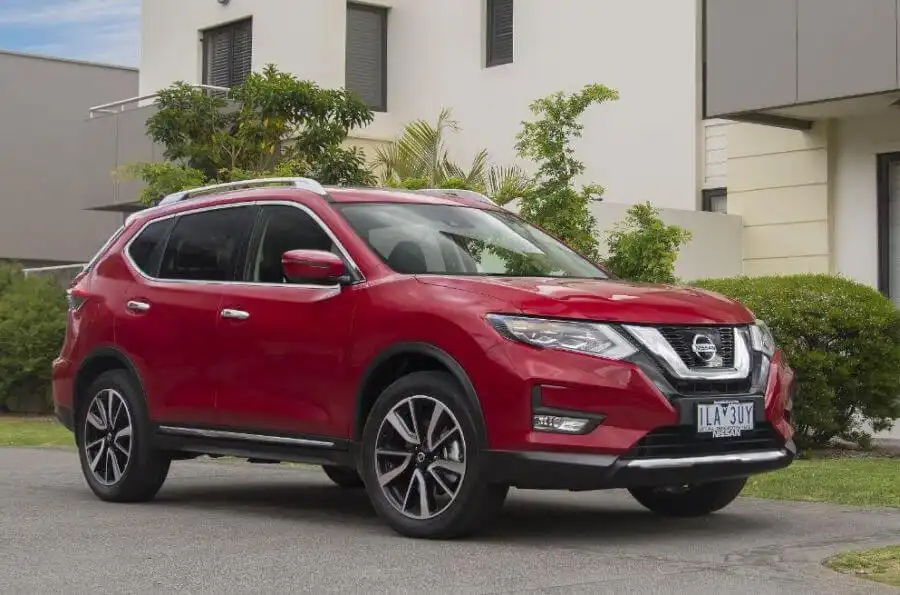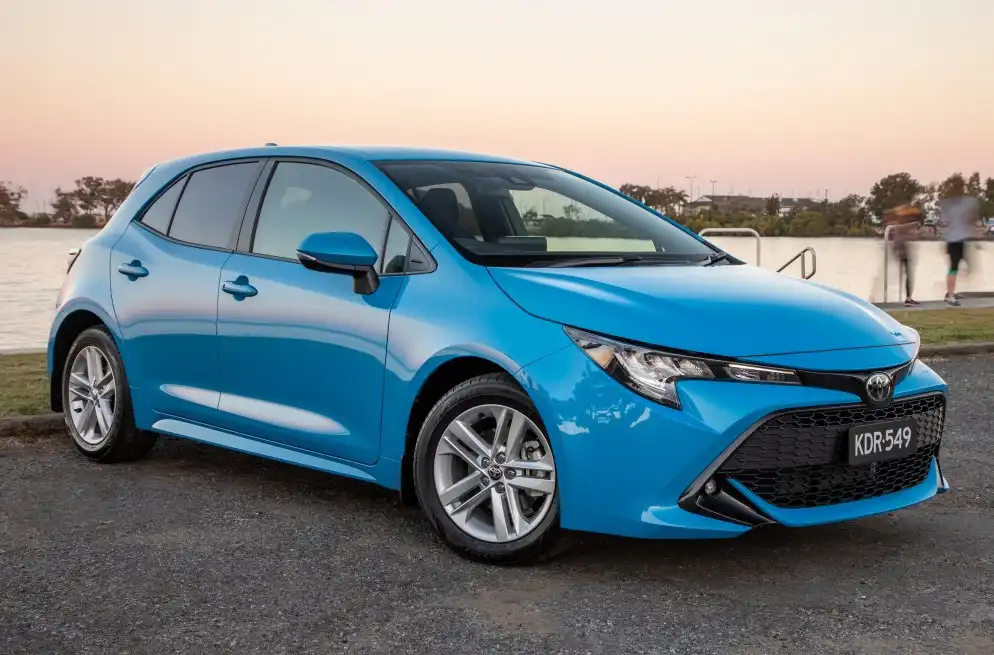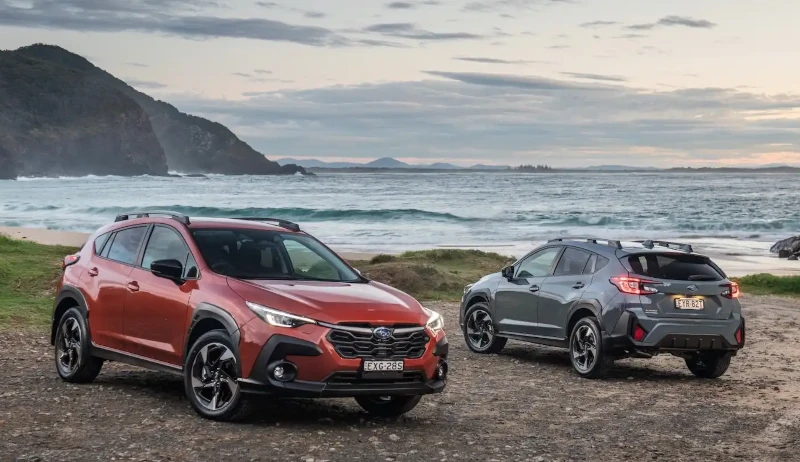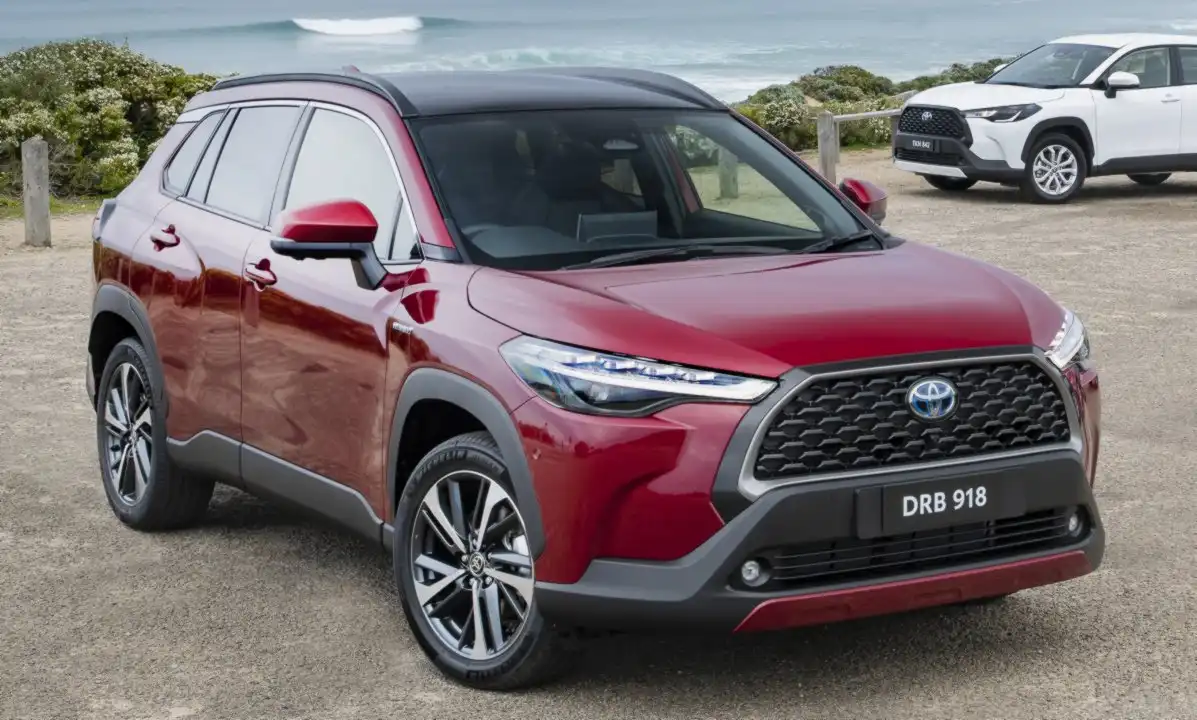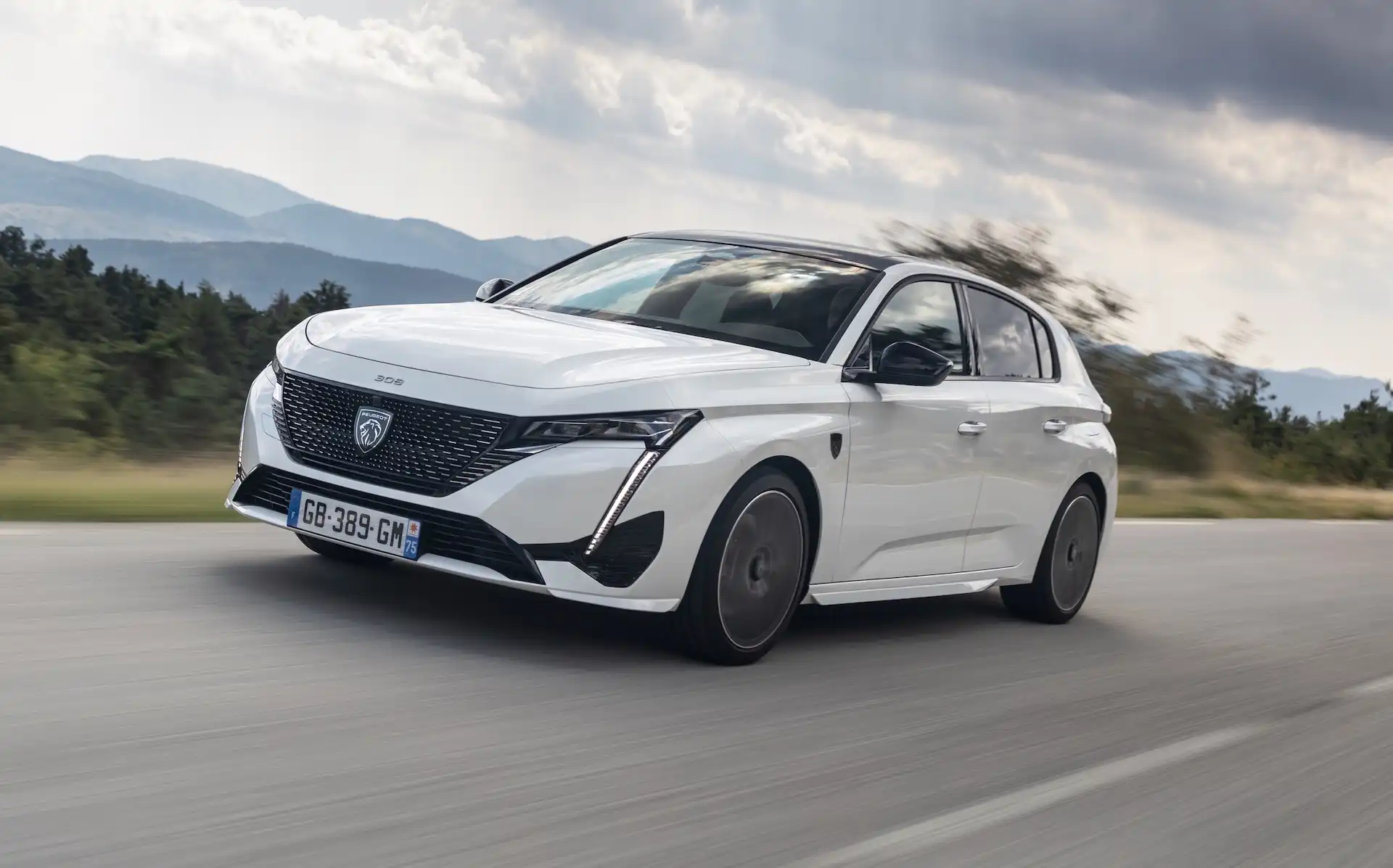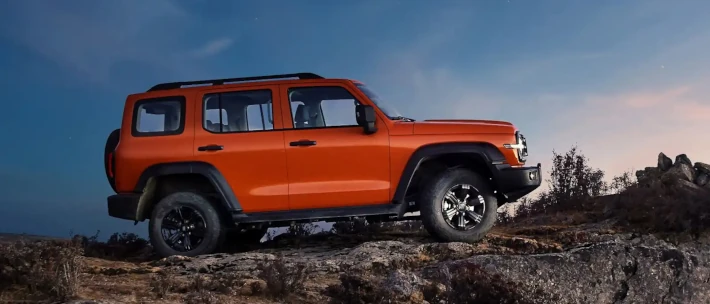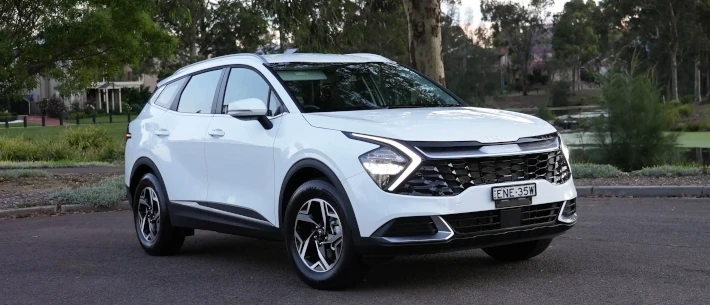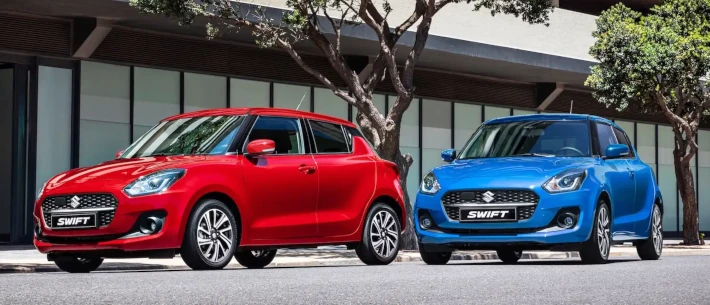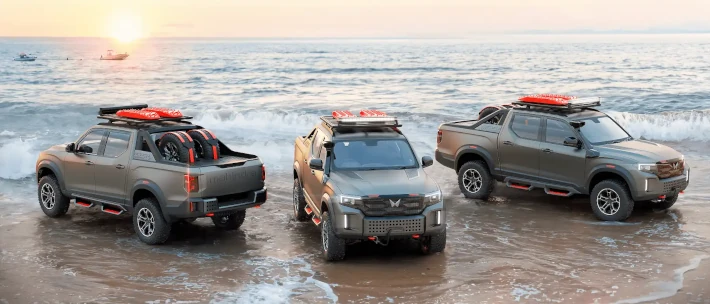Back in 2001, though, the world of SUVs only accounted for a small share of the market, making it at one point in time the world’s best selling SUV.
Twenty-years later, though, and the X-Trail is facing dramatically different market conditions.
The main problem that the X-Trail faces is that in recent years, the world of crossover SUVs has become so popular, it’s easy to be drowned out by its competitors. As a result, the latest generation X-Trail must perform to an exceptionally high standard if it is to win-over new buyers over the existing competition like the Toyota RAV-4, Mitsubishi Outlander, Honda CR-V, Mazda CX-5, Ford Escape, Volkswagen Tiguan and even the Haval H6.
With all that in mind, just how well does the X-Trail perform in its own right, and how well does it assert itself against the huge number of options out there in the world of compact crossover SUVs? Let’s find out.
Starting Price: $30,665
OnlineAuto Savings: $5,524
Nissan X-TRAIL (ST-L 7 SEAT) Specifications
| Model Date | 2021 |
| Make | NISSAN |
| Model | X-TRAIL |
| Series | T32 MY21 |
| Variant | ST-L 7 SEAT (2WD) |
| Body | 4D WAGON |
| Fuel type | UNLEADED PETROL |
| Transmission | CONTINUOUS VARIABLE |
| Drive | FWD |
| Engine | MPFI |
| Engine capacity | 2488 |
| Engine configuration | VARIABLE DOUBLE OVERHEAD CAM / 16 valves |
| Engine RPM | 6000 / 4400 |
| Cylinders | 4 |
| Torque | 226 |
| KW | 126 |
| Fuel tank size | 60.0 |
| Fuel usage specs | 8.1 / 0.0 |
| CO2 | 188 |
| ANCAP security rating | 5 |
For more details and other variants, check Nissan X-TRAIL car page.
Need help narrowing down your choices?
Get in touch with one of our Car Buying Specialists today
Request a quoteHow Much Does It Cost?
The Nissan X-Trail lineup kicks off from $30,665 for the entry-level two-wheel drive, 2.0-litre ST variant, with the 2.5-litre ST being priced at $32,665 and the ST+ priced at $34,140. From here, the range moves to the seven-seat 2.5L, which is priced at $34,265, through to the all-wheel drive ST - priced at $34,665 - and the ST+ AWD which is priced at $36,410.
The range then moves to the ST-L variant, which is priced at $38,675 for the two-wheel drive 2.5L, with the seven-seat variant priced at $40,275, and the all-wheel drive variant receiving a price tag of $40,675.
Finally, the Nissan X-Trail range tops out in the form of the X-Trail Ti, which receives the 2.5-litre engine and an all-wheel drive system, and is priced at $46,115. Keep in mind that these prices are subject to change, and do not include on-road costs.
How Much Can OnlineAuto Save You?
Using our online car buying service, one of our auto experts can assist you in finding the greatest value model for you.
What Features Does the Nissan X-Trail Have?
The entry-level Nissan X-Trail ST grade receives a set of 17-inch alloy wheels, automatic headlights, power folding side mirrors, keyless entry and start, a reversing camera, heated and cooled cup holders, hill-start assistance, fabric upholstery with a premium steering wheel and a 7.0-inch infotainment system with Bluetooth, Apple CarPlay, Android Auto and DAB+ radio paired with a six-speaker sound system.
Opting for the X-Trail ST+ variant adds a set of front and rear-mounted parking sensors, satellite navigation upgrade for the infotainment system, as well as a surround-view camera.
The X-Trail ST-L variant adds a set of larger 18-inch alloys, fog lights, faux leather upholstery and steering wheel, dual-zone climate control, roof rails, heated mirrors, rear privacy glass, as well as a set of heated seats up front with power-adjustable lumbar support.
Finally, the range-topping Nissan X-Trail Ti variant comes riding on a set of 19-inch alloy wheels, adaptive LED headlights, powered boot lift with motion detection, adaptive cruise control, a panoramic sunroof, heated rear seats and steering wheel, a dimming rear-view mirror, hill descent control for the all-wheel drive system, tan leather upholstery option and an eight-speaker sound system from BOSE.
Range Features:
-
17-inch alloys
-
Keyless entry & start
-
Reversing camera
-
Automatic headlights
-
Heated and cooled cup holders
-
7.0-inch infotainment system with Apple CarPlay, Android Auto and DAB+ radio
-
Powered, folding mirrors
-
Six-speaker audio system
-
Surround-view camera (ST+)
-
Front and rear-mounted parking sensors (ST+)
-
Satellite navigation (ST+)
-
18-inch alloys (ST-L)
-
Faux leather upholstery and steering wheel (ST-L)
-
Heated front seats (ST-L)
-
Roof rails (ST-L)
-
Fog lights (ST-L)
-
Powered front seats (ST-L)
-
19-inch alloys (Ti)
-
Adaptive LED headlights (Ti)
-
Heated steering wheel (Ti)
-
Powered boot lift with motion detection (Ti)
-
Panoramic sunroof (Ti)
-
Adaptive cruise control (Ti)
Nissan X-TRAIL (ST-L 7 SEAT) Colours
| Ruby Red | Marine Blue |
| Brilliant Silver | Gun Metallic |
| Ivory Pearl | Pearl Black |
| Copper Blaze |
What Colours is the Nissan X-Trail Available in?
Nissan is offering the X-Trail range in a number of colours, including Ruby Red, Marine Blue, Brilliant Silver, Gun Metallic Grey, Ivory Pearl white, Pearl Black and Copper Blaze.
Is it Comfortable to Drive?
While the X-Trail was originally conceived with adventurous driving in mind, in recent years, it’s become more accommodating to the more mundane drives you’ll take throughout the week. This is a good selling-point overall, because while drivers no doubt value having the opportunity to head off-road, realistically, the X-Trail will find itself on the smooth paved roads of your city or town more often than not.
As a result, the X-Trail has become exceptionally family-friendly and comfortable in its driving dynamic, as you’d expect from a crossover SUV. The lineup features a choice of two engine options, with the base-models receiving a 2.0-litre four-cylinder engine pushing out 106kW/200Nm of torque, while the higher-spec variants are powered by a 2.5-litre unit producing 126kW/226Nm of torque. Translated to English, this means that the base model has enough power for the average Australian family’s needs, while the 2.5-litre unit offers a more competitive power figure and adds to its potential off-road ability.
Power is transferred to the front wheels in base models, or all four wheels in higher-spec models via a continuously variable transmission, which effectively feels like you’re driving with one long gear. This means that the X-Trail’s acceleration is linear and smooth, which adds to its appeal as a daily driver.
Around town, the X-Trail benefits from an extremely light steering design that makes turning the wheel from lock-to-lock an easy task, and means that the process of low-speed turns and parking isn’t a workout. All up, the steering is perfectly weighted for urban driving, remaining light at low speeds and offering more feedback to the driver as you pick up speed.
One thing that might not appeal to daily drivers, though, is the suspension hardware that Nissan has fitted to the X-Trail, which errs on the firm, sportier side than some of its competitors. While this means that you can have more fun through the corners in the X-Trail than some of its main rivals, the reality of daily driving can be a little less comfortable than its competitors. Overall, it remains comfortable on most sealed road surfaces here in Australia, but the amount of bumps you feel when you’re up to speed can detract from the experience over long journeys.
When the sealed roads stop, though, and the off-roading starts, you’ll be impressed by just how capable all-wheel drive X-Trail is over a number of its key competitors. While it’s no doubt held back by its limited ground clearance, the power on offer and the suspension hardware means the X-Trail can handle some light to moderate off-roading that its rivals simply couldn’t.
All up, then, the X-Trail represents a perfectly suitable crossover SUV that can handle the everyday city duties that its owners will demand, while being able to answer the call for adventure when the mood strikes. While some of its competitors make the claim of some light off-roading, the X-Trail offers perhaps the most adaptability when it comes to different types of driving.
Is the Nissan X-Trail Practical and Spacious?
The original Nissan X-Trail was built to be rugged, flexible, spacious and practical, and the latest generation is no exception. The front of the cabin features a relatively straight-forward, albeit uninspiring cockpit design that feels familiar to cars of the past decade. While it doesn’t necessarily impress when it comes to looks, the X-Trail retains its genuine practicality and flexibility for families and weekend adventures.
Stepping inside the front of the cabin, the driver and front passenger are treated to a spacious cabin that offers a heap of forward visibility, shoulder room and headroom for tall drivers. The adjustable driving position allows the driver to get comfortable, while a handful of practical touches from Nissan means the X-Trail can swallow up the loose items that families often accumulate. Up front, there’s the usual set of door bins either side, as well as a large glove box, folding armrest with a decent amount of storage underneath, a set of cup holders in the centre tunnel, as well as a small tray for smartphones up front.
Passengers in the rear of the cabin will be happy, too, when it comes to space and comfort. Nissan has designed the X-Trail with a second row of seats that offer a huge amount of legroom for even adult rear passengers, with no complaints when it comes to headroom, either. This means that if you have one or more tall teenagers in your family, the X-Trail is perfectly suited to their comfort needs, and you’re unlikely to hear any complaints from the second-row, even on long journeys considering the fact the seats can slide back and forth for added space. Between the two rear passengers there is also a folding armrest with a pair of cup holders that opens up access to the boot for easy access. Seven-seat X-Trail variants offer a relatively cramped third-row of seats in the cabin which are designed primarily for young children due to the limited leg and head room available.
For the families out there with young children, Nissan has installed ISOFIX anchor points on the second row which are easy to access, and can accommodate even the bulkiest of child seats without a problem. In terms of cargo space, the five-seat Nissan X-Trail has a boot rated at 565L of storage in the boot, which expands to 945L with the rear seats folded down, and also features a removable cover that can open up access for even more volume atop the space-saver spare tyre. The seven-seat X-Trail has a boot rated at 135L, which expands to 445L with the third-row folded down.
Is it Safe?
The Nissan X-Trail was awarded ANCAP’s maximum five star safety rating when it was tested back in 2017. It scored 14.68 out of 16 for frontal impacts and a perfect score of 16 for side impacts, achieving an overall score of 35.28 out of 37.
As standard, entry-level X-Trail variants are packaged with forward collision warnings and autonomous emergency braking, as well as a host of airbags, while the ST-L variant receives blind-spot monitoring, rear cross-traffic alerts and driver attention warnings and the flagship Ti variant is packaged with lane-keep assistance and pedestrian detection for the AEB system.
Overall, then, the X-Trail performs well in terms of safety, however it’s a shame to see the entry-level variants missing out on some key safety tech that some of its rivals receive.
Is it Fuel Efficient?
With two different engines available throughout the X-Trail range and a choice of two-wheel and all-wheel drive variants, fuel economy largely depends on which X-Trail you’re opting for. The entry-level front-wheel drive manual is rated at 8.2L per 100km on a combined cycle, while the 2.5-litre front-wheel drive returns a fuel economy figure of 7.9L per 100km, making it the most economical X-Trail in the range. Fuel economy rises to 8.1L per 100km in the seven seat variant, while the all-wheel drive variant with a 2.5-litre engine is rated at 8.3L per 100km on a combined cycle.
Our Verdict: Is the Nissan X-Trail Worth it?
Even though the styling has transformed into more of a sleek, stylish package, at its core, the Nissan X-Trail remains true to its original design brief, offering a reliable and flexible package for you and the family to escape on the weekend or school holidays. As a complete package, it performs admirably in all the key areas that Australian consumers demand, and while the interior might lack some of the flair that its competitors receive, you can be confident that the Nissan X-Trail is more than up for the task of accommodating you and your family. On that note, if you’re in the market for a new car, you can get a free quote and see how much OnlineAuto can save you on your next car, or call us on 1300 719 925
Five Specs You Need to Know
-
Five-year, unlimited KM warranty
-
12-month/10,000km service intervals
-
Six-years capped price servicing packages available
-
565L boot in five-seat variant; 445L boot for seven-seat
-
Five star ANCAP safety rating
Pros
-
Smooth power delivery from engine and CVT transmission
-
Ample cabin space and comfort for growing families
-
Adaptable platform for smooth, relaxed daily city drives
Cons
-
Some key safety equipment reserved for higher-spec models
-
Uninspiring, dated front cabin design
-
Short service intervals
OnlineAuto Rating: 8/10
Nissan X-TRAIL Competition
Nissan X-TRAIL |
VS |
Mitsubishi Outlander |
| Toyota RAV4 | ||
| Nissan Qashqai | ||
| Mitsubishi ASX | ||
| Mazda CX-5 | ||
| Nissan Pathfinder |
